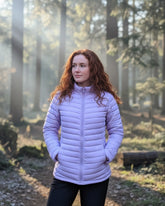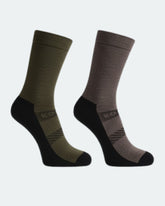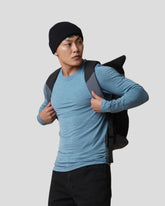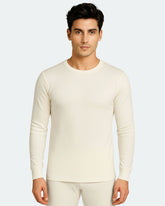The Ultimate Canada Packing List 2024: Winter Jackets For First-Time Students
Hey there, future Canadian students! Are you gearing up for your big adventure in the Great White North? As you prepare to embark on this new chapter of your life, there's one crucial item you need to tackle head-on: jackets for Canada winter.
Canadian winters are known for their biting cold and heaps of snow, but fret not! We're here to provide you with the ultimate packing list for winter jackets, ensuring you stay warm, cozy, and ready to take on the frosty wonderland.
In this blog post, we'll guide you through the process of selecting the perfect jackets for Canada winter escapades. From insulated parkas to versatile puffers, we've got all the options covered.
We understand that packing for a new country can be overwhelming, especially when it comes to preparing for the chilly weather. But fear not, we're here to simplify the process and ensure you're well-prepared for the Canadian winter.
So, whether you're heading to the bustling streets of Toronto or the serene campuses of Vancouver, it's time to bundle up and embrace the true essence of Canada's winter wonderland. Let's dive into the ultimate packing list for winter jackets for Canada winter season, tailored specifically for first-time students studying abroad.
Get ready to experience snow-covered landscapes, make lifelong memories, and conquer the cold in style. Grab your hot cocoa, cozy up, and let's get started on creating your ultimate winter wardrobe for Canada winter!

A Little About Canada Winter
Canada is a vast and rugged land. From north to south, It spans more than half the Northern Hemisphere.
It stretches almost 4,700 miles (7,560 kilometers) from east to west, across six time zones. It's the second largest country in the world but has only 0.48 percent of the world's population.
Canada has a lot to explore once you land there:
- Black-Blue Lakes
- Numerous Rivers
- Majestic Mountains
- Rolling Central Plains
- Forested Eastern Valleys
Canada has a rapidly increasing economy and a high standard of living. It brings with it limitless options and potential.
Canada is a vast country with varying climates, but most of the country experiences cold winters. Coastal regions, especially in the west, tend to have milder winters due to the moderating influence of the ocean, while central and northern regions can experience extremely cold temperatures.
Winter in Canada often brings heavy snowfall to many regions. Cities like Toronto, Montreal, and Vancouver (in the surrounding mountainous areas) can experience significant snow accumulation, which can impact transportation and daily life.
Every year, the country produces thousands of jobs and boosts the economy. Canada has the following characteristics that make you want to visit there:
- Distinct culture
- Beautiful Locations
- Remarkable wildlife
- Superb medical and healthcare facilities
- Best colleges and institutions.
If you're a student, this last point will attract you, even more to step foot into this country. It's no surprise that so many individuals travel to Canada every year.
Understanding Weather for a Canada Packing List
In general, Canada experiences four seasons throughout the year. You should be aware of all the seasons so you know how to deal with them. After all, the weather is a crucial part of any packing list, let alone a Canada packing list.
1. Spring - March to May
This is the time when the snow begins to melt and the weather becomes warmer. You’ll experience a lot of rain at this time of year.
The days are warm and long. But the nights are cool and chilly. Plants and grass begin to grow during the spring months.
Trees start to get leaves again during April or May. You’ll need a warm coat or jacket for Canada's chilly winter, a hat, mittens, and boots in the spring. It would also be advisable to buy an umbrella and use it when need be.
2. Summer - June to August
During summer, the daytime temperatures are usually above 20 degrees Celsius. But they can go above 30 degrees or higher as well in July.
It can also be very humid in some parts of Canada during summer. High humidity levels can make it much hotter.
Mosquitoes, ticks, and flies are very common at this time of year. You should use insect repellents if you’re going outside.
It’s also smart to wear a hat and use sunscreen to prevent sunburn. Other than this, staying hydrated is always a good idea in the summer.
3. Fall - September to November
During fall, days seem shorter. You get fewer hours of sunlight and the first frosts begin to appear. Leaves turn from green to red, orange, yellow, and brown before falling from the trees.
The weather is usually rainy and expect the first sights of snow in November. Temperatures can change quickly from day to day. But the average temperatures range between 20 degrees to 5 degrees in November.
As for the clothing, you’ll need thermals, hoodies, mittens, hats, and boots in the morning. But later in the day, a light winter jacket for light winter in Canada should be fine. It's also good to carry an umbrella in the last month.
4. Winter - December to March
Winter can seem long in Canada, But it's also a fun season to experience if you dress well. It holds true especially if you need to go outdoors. Temperatures range between -10 to -15 degrees Celsius during winter in Canada.
It can often feel much colder with the wind. Make sure you carry a warm hat to cover your ears. Warm mittens, boots, and a coat that buttons or zips closed in the front. Boots with rubber soles will keep you from slipping on ice and snow.
You should also layer your clothing. For example, you might decide to wear long underwear, also called long johns, or t-shirts and sweaters underneath your coat or winter jacket. This keeps you warmer than if you wear one thick layer.
If you don't have a jacket for Canada winter already, buy one before you leave for Canada. If you want another one, you can buy one in Canada. You’ll find a large selection of coats at good prices in local stores. Also, check the temperature rating for the coats you buy.

Ideally, you should land in Canada with Puffer Jacket for Men bought back home itself. You can enjoy ice skating, skiing, sledding, or building snowmen.
When temperatures are below 0 degrees Celsius, don’t leave any skin uncovered. Always carry you jackets for Canada's winter. Uncovered skin in freezing temperatures can lead to frostbite. Winds can make temperatures feel colder. It’s known as the wind-chill factor.
We spoke to Tania Hemdev, a student studying in Canada for the past four years. This is what she has to share about the weather in Canada. She also recommends some of Kosha's products that are useful in Canada.
The next video that you will see now, is a discussion between Tania and Yuktie, Kosha's founder. They discuss various myths about winters and tips to survive Canadian cold weather. So go, check that out!
Now that you're aware of these aspects, make an appropriate Canada packing list for whichever season you travel.
The Importance of Layering
Layering is a crucial principle in effective cold-weather dressing because it allows you to regulate your body temperature and stay comfortable in changing conditions. By wearing multiple layers of clothing, you create an insulating barrier that traps heat close to your body while also allowing you to remove or add layers as needed. This helps prevent overheating and excessive sweating, which can lead to feeling cold and uncomfortable when you stop moving or when the temperature drops.
The layering system is particularly important in winter because it helps you adapt to both outdoor cold and indoor warmth without needing to completely change your outfit.
Layering principles for effective cold-weather dressin
- Base Layer: The Thermal Wear for Men is in direct contact with your skin and is responsible for wicking moisture away from your body. Choose moisture-wicking materials like merino wool or synthetic fabrics that keep sweat away, helping you stay dry and warm.
- Mid Layer: The insulating layer provides warmth by trapping and retaining body heat. This layer can consist of sweaters, fleece jackets, or down vests. It's important that this layer is not too tight-fitting to allow for air pockets that enhance insulation.
- Outer Layer: The outer layer, usually a winter jacket, protects you from wind, rain, snow, and other elements. It should be both windproof and waterproof to provide effective protection. This layer serves as a barrier against the external environment.
- Accessories: Don't forget about accessories like hats, gloves, scarves, and Woolen Socks for Men. These accessories help prevent heat loss from areas where blood vessels are close to the skin's surface.

How to use your winter jacket as a part of a layering system
Using your winter jacket as part of a layering system involves combining it with other layers to achieve optimal warmth and comfort in cold weather. Be mindful of how you incorporate jackets for Canada winter.
- Choose the Right Jacket: Select a winter jacket that is appropriate for the conditions you'll be facing. Look for a jacket with good insulation that will keep you warm, a waterproof or water-resistant outer shell jacket, and features like adjustable cuffs, a high collar, and a hood for added protection.
- Always start with a Base Layer: Wear a moisture-wicking base layer, such as a thermal or merino wool shirt, to keep sweat away from your skin. This helps in maintaining a dry and comfortable body temperature.
- Then add a mid layer if necessary: Depending on the coldness of the weather, layer a fleece jacket, down vest, or synthetic insulating layer over your base layer. This adds an extra barrier of warmth and helps trap body heat close to your core.
- Put on Outer Layer Jacket: Your winter jacket serves as the outermost layer. Put it on over your mid layer jacket. Make sure to zip or button it up completely to maximize its effectiveness in blocking out wind, snow, and cold air.
Basic Tips for a Canada Packing List
Before you start off with anything, these are some essentials you’ll need in Canada. Here’s a summary of the important things to remember for your Canada packing list:
- Documents and Money Go in Your Bag First
- Check the Weather and Pack Accordingly
- Don’t Pack Your Whole Wardrobe
- Don’t Forget Daily Essentials
- Bring the Medicines You Need
- Have Suitcases with Wheels
- Buy Compression Packing Bags
If you follow these basics, you’ll be on the right track for your trip to Canada. You’ll also get to learn more about these aspects in the following segments.
Packing Smart: Making the Most of Limited Space
Packing jackets for Canada winter efficiently in your luggage can save space and ensure you have everything you need for your trip. Here are some tips to help you pack your jackets for Canada in winter effectively:
- Roll Instead of Fold: Rolling your winter jackets instead of folding them can save space and help prevent creases. Start from the bottom and roll them up tightly.
- Wear Bulkiest Jacket During Travel: If possible, wear your bulkiest winter jacket during your travel. This will free up space in your luggage and also keep you warm in colder airport or transit environments.
- Use Compression Bags: Compression bags are a great way to squeeze out excess air and reduce the volume of your winter jackets. These bags can be particularly useful for down jackets that can be compressed without damaging the insulation.
- Utilize Pockets and Storage Space: If your winter jackets have interior pockets or extra storage space, utilize these areas to pack smaller items like socks, gloves, or accessories.
- Pack According to Need: Assess the weather conditions at your destination and pack the appropriate number of winter jackets. Avoid overpacking by only bringing the jackets you'll actually need.
- Maximize Jacket Versatility: Opt for versatile jackets that can serve multiple purposes. For example, a jacket with a removable liner or a 3-in-1 design can offer different levels of insulation depending on the weather.
- Prioritize Necessities: Be mindful of your priorities and the activities you'll engage in during your trip. Pack the Parka Jackets for Men that are most essential for your planned activities.

A Student's General Packing List for Canada
As you prepare to depart for Canada, the first thing you must do is pack well! I know it isn't easy to get it right, but don't worry. We'll provide you with the information you need.
1. Documents and Money
You need the important documents and cash in hand. If you’re going as a student there will be some essential paperwork that has to be done before you get into Canada. So here are some of the essentials you’ll need to carry with you:
- Passports, Visa, and other Identity Proof Documents
- Necessary Marksheets
- Flight Tickets/ Boarding Pass
You can use a nice long folder to store these documents. When you're called upon to show them to the authorities, carefully remove them and do the needful.
The next important thing as I mentioned is your cash. Since you’re entering a new country, you’ll need the money as per their currency and values.
You should always carry some cash that comes in handy during emergencies. Along with that, you’ll also have to exchange the currency once you land at the airport.
Do ensure to keep track of all the money exchange receipts when you’re out to get the work done.
2. Food
Fresh fruits and vegetables are not permitted to be brought into Canada. In a well-packed method, you can take up sorts of spices.
You will undoubtedly miss Indian cuisine. So bring along some essentials that you’ll need and shop for the rest in Canada.
You can bring all those packets in by double-packing them and labeling them with the names of the masala. Instant meal packets will be your savior in Canada during your first few days. So you must have sufficient stock of such food.
After a while, you'll become tired of bland, spiceless meals, making you seek Indian delights. Pickles are something that every Indian dream about taking overseas. You may do so without hesitation.
3. Kitchen Utensils
Once you’re in you’re new home, you must know to cook for yourself too. Ordering food daily wouldn’t be a wise choice for your health or wallet.
But ensure that you shop for your kitchen utensils after landing in Canada. If you bring them from home, they’ll take up a lot of space in your luggage.
You can carry one set of plates and spoons for your food. You should also carry some ready-to-eat stuff for the initial two days of your life in Canada.
A few simple utensils might help you save money. A pressure cooker is an essential piece of kitchenware you will struggle to live without in Canada.
It can prepare everything from rice to soups and curries. In addition, a pressure cooker is prohibitively costly in Canada.
You can also bring along other items like tawas, kadais, utensils, rolling pins for your rotis, and so on.
A strainer or sieve is an essential item that is inexpensive in India but not so much in Canada.
4. Clothing and Footwear

When you’re in Canada, you must dress according to the weather. Here are some essentials you should carry when you’re on your way to Canada:
- 1 Winter Jacket
- 2 Pairs of Thermals
- 2 Sweatshirts
- 1 Pair of Woolen Gloves
- 1 Woolen Beanie
- 2 Pairs of Woolen Socks
- 5-10 sets of Undergarments
Apart from this, you must also carry the following for your daily commutes and events in Canada:
- 3-5 T-shirts
- 1 White and 1 Black Formal Shirt
- 1 Black Formal Pant
- 2 Jeans (Black and Blue colours would be ideal) and 2 Chinos (Brown is a good choice)
- 1 Formal Pair of Shoes and 2 Pairs of Casual Shoes
- 1 Formal Belt
- Handkerchief Set
- Festive Clothing
Daily Essentials for Home
- 2 Bedsheets
- 2 Towels
- 2 Toothbrushes
- 1 Toothpaste
- Hair Oil
- Deodorant
When you get into your student accommodation, you must have your daily essentials with you. It will take some time but you must get used to living in a new country. Hence, you will need the above essentials while you’re at home in Canada.
You also need good footwear to handle seasons like winter. Canada experiences black ice during winter. It’s something you should be aware of. Boots will help you walk past the black ice and not let you trip or fall. Also, it is advisable to carry jackets for Canada in winter.
We spoke to Tania Hemdev regarding the tips and tricks to survive Canadian winters. She moved from Mumbai to Canada at a very young age to pursue further education.
Here’s what she had to say about black ice and many more aspects related to Canadian winters.
5. Electronics
Wherever you go, you’ll always need some gadgets along with you. As a student, you must ensure that you pack the following for your electronics checklist:
First up, you must ensure that you’re carrying a smartphone with you. It’s always best to bring one along from the home country. Further, if you need to buy one in Canada, the prices are pretty much the same as in India.
Next comes your laptop and charger. Here again, refurbished items would be cheaper alternatives for you to consider.
If you need your phone to be in working condition throughout, you’ll also need to carry the essential accessories. Your power bank and chargers are essential to keep your phone charged and in usable condition.
Since you’re traveling abroad, it’s advisable to carry an international adaptor.
We’ve read about phones and laptops. But your headphones are also important here. As students, you’ll mostly be living in student accommodations. As a result, you shouldn't let the noise scatter around.
Hence, headphones are a must-have to enjoy your music. Along with this carry a speaker as well. When you go out for picnics or weekends, you can enjoy some music with a portable speaker.
Simply bring your laptop if you live in India. Electronic equipment in Canada can be costly. So it's best to bring along all your gadgets from home. If your laptop is in good functioning order, bringing it to Canada is always the best option because laptops are expensive.
Laptop requirements and specifications will be listed on your university's website.
Regarding mobile phones, practically all unlocked cell phones above 3G can be brought to and used in Canada.
6. Medicines
Medicines might come in useful at any moment. Hence it's essential to keep some basic medicines on hand. You could carry some medication for issues like:
- Body Aches
- Fever
- Common Cough and Cold
- Skin Burns
- Loose Motions
- Vomiting
Along with this, if you have some specific prescribed medicines, you must carry them along., Having good knowledge about home remedies will also help in times of emergency.
Please bring the prescription for all medications along with you. Otherwise, you won't be able to carry them on the flight.

Preparing for Outdoor Activities
Tailoring your jacket for winter in Canada according to your outdoor hobbies is essential for staying comfortable and safe during your activities. Different outdoor activities have varying demands in terms of movement, insulation, and protection from the elements.
Tailoring your jacket for Canada winter regarding the outdoor hobbies
Waterproof and Breathable: Look for a winter jacket that is both waterproof and breathable. Skiing and snowboarding can expose you to wet snow and changing weather conditions.
Insulation: Consider the temperature on the slopes. If you tend to get cold easily, opt for a jacket with good insulation.
Mobility: For outdoor activities in winter, it requires a jacket that allows for a full range of motion. Look for a jacket that is not too restrictive and allows you to move your arms freely.
When choosing a jacket for Canada winter for outdoor activities, consider your personal comfort preferences, the specific demands of the activity, the climate, and the potential weather conditions. Each activity has its unique requirements, so aim to find a jacket that offers the right balance of warmth, mobility, and protection for a safe and enjoyable experience.
FAQs
For students, going to a completely new country may seem like a daunting task and it is, so it is natural to have countless questions. These are some frequently asked questions that may be of some help to you too!
1. How Much Luggage to Carry While Travelling to Canada?
The average weight allowed for students is often between 40 and 46 kg. As a consequence, organize your luggage carefully.
It’s advised that 23 kg be transported in two bags. Your main piece of equipment should be a robust stroller bag, large enough to store most items, and easy to move. And it is better to carry lightweight jackets for Canada winter.
2. What should Indian students take to Canada?

There are some items you should keep in your carry-on bag.
- Keep all required documentation, such as your passport, visa, and offer letter.
- Keep your boarding pass in a secure place.
- Keep a pen and a journal on hand for taking notes.
- Keep some money in both Indian and Canadian currencies on hand.
- Keep some SOS medications in your luggage.
- Make sure all your electronic devices are securely stored in your bag.
- Hand sanitizer, facial wipes, earbuds, itinerary.
- A jacket for Canada's winter season.
- Accessories like gloves, and a hat because Canada is colder.
3. What Do University Students Wear in Canada?
Students typically dress casually and in functional, comfortable gear. You're free to bring whatever you like, as long as it suits your weather and style.
If you're enrolled in a co-op program, you will need additional business attire for interviews and work times. Also, you might need to carry your jackets for Canada winter everywhere as the weather is quite chilly there.
4. What is the best jacket for Canada winter?
The ideal type of Jackets for Canada winter is the parka. Their increased length more efficiently traps heat while providing better weather protection. Parkas are renowned for having excellent insulation.
5. What thermals are best for winter in Canada?
Merino thermal clothing is excellent at wicking moisture from your body. Additionally, they may be layered beneath practically any garment to keep you warm and dry. You can get by with wool leggings or tights below your pants or jeans for warmth if the temperature is not too low, as it might be in coastal areas or British Columbia.

Conclusion
Making a Canada packing list is an intimidating task. It can be for any other country other than Canada as well. After all, you're stepping out of your comfort zone into a new place. So it's understandable.
But please concentrate on your main reason and plan accordingly. As students, you might not be as financially independent as others. So you must keep that in mind while packing and spending money on ground zero.
All you need to do is prepare a thorough list and ensure that everything crucial is taken care of.
Here are some basics you should look into once the dreaded packing is completed:
- Save vital contacts and other information to your Google account.
- Be informed of the weight limitations, entertainment, and food options available on your flight.
- Be aware of the prohibited items on your airline's official website to avoid any issues at the airport.
- Be fully prepared for pickups and drops in Canada and your home country.
- Have internet programs on your mobile phone that allow you to call or contact family members when you arrive in the nation.
- Make sure to include anything that distinguishes your luggage so you can readily recognize it.
Once you land there, getting used to life might take some time. But gradually, you will get accustomed to it and feel more independent and in control.
Apart from this, you can buy warm winter clothes, accessories, and jackets for Canada winter well in advance because you can't spend thousands of dollars and regret it later in Canada. And if you want a downloadable student checklist, you can WhatsApp us at 9820999006. You could also drop in an email at konnect kosha for the same.
Hope you have a wonderful experience while you're in Canada.
Editor’s Picks
Alaskan Parka Jacket For Women - Slim Fit
- ₹8,925.00
₹11,900.00- ₹8,925.00
- Unit price
- / per
Lightweight Packable Puffer Jacket For Women
- ₹5,040.00
₹8,400.00- ₹5,040.00
- Unit price
- / per
Alaskan Parka Plus Size Jacket For Women
- From ₹10,125.00
₹13,500.00- From ₹10,125.00
- Unit price
- / per
Woolmark Full Sleeves High Neck Thermal Top For Women
- From ₹1,845.00
₹1,845.00- From ₹1,845.00
- Unit price
- / per
Men's Pack Of 2 Merino Wool Cushioned Technical Socks
- ₹2,148.00
₹3,580.00- ₹2,148.00
- Unit price
- / per















